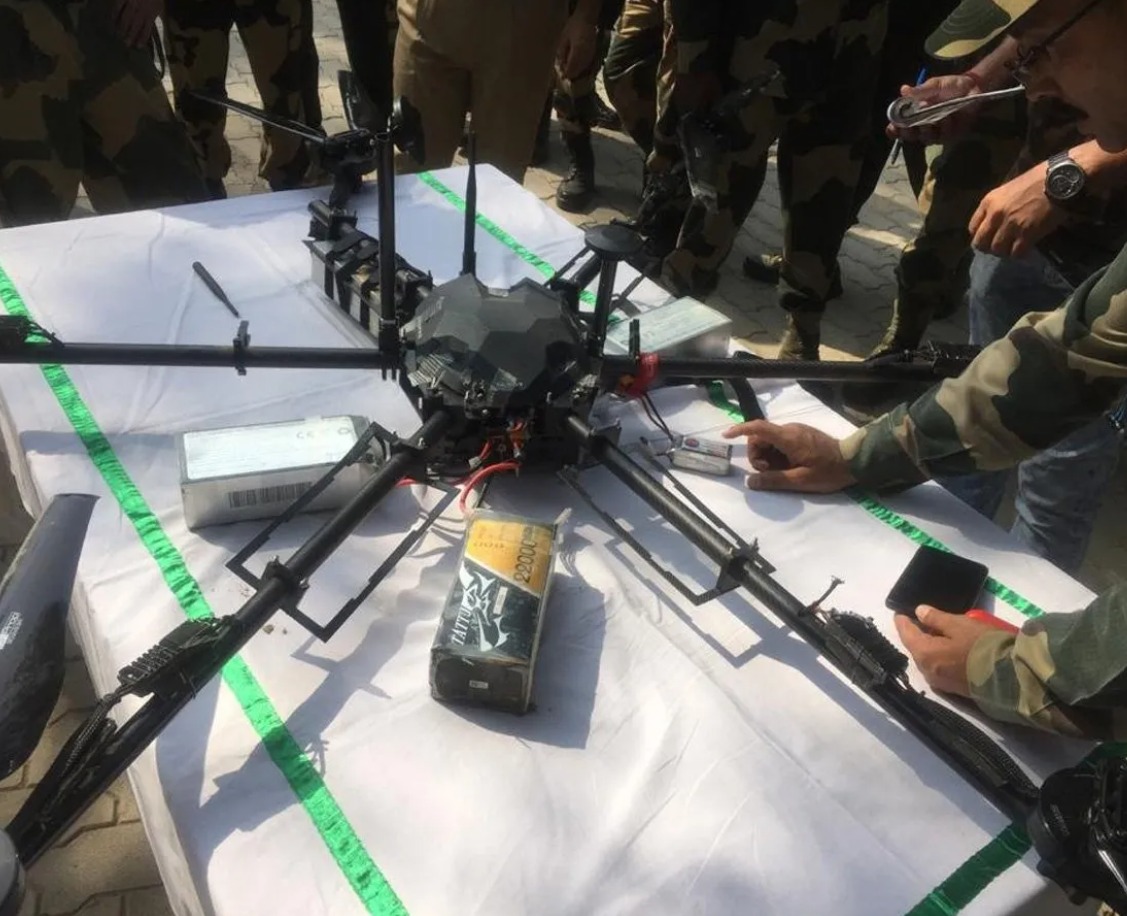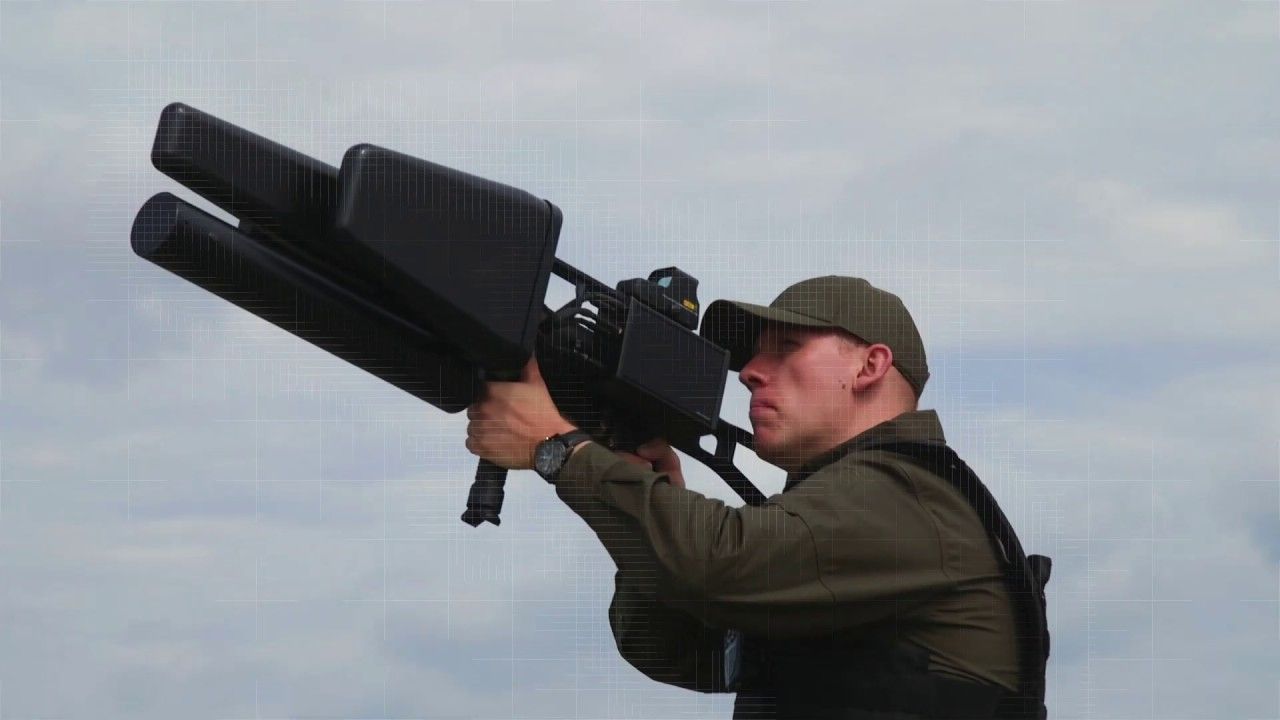In response to anti-drone measures taken by India, Pakistani entities sending drones into Indian territory have leveled up their game. The Indian authorities have disclosed that since last year, the drones intruding from the Pakistan side have not only doubled in number, but they have become smaller in size, fly up to the height of 1 kilometer, and are not easily detectable.
The Border Security Force (BSF), responsible for manning the India-Pakistan international border, recovered a total of 95 drones along with weapons, ammunition, and drugs they were smuggling across in 2023.
The Indian drone problem has a China-Pakistan stamp as most of the drones violating the International Border along Pakistan are Chinese-made dual-purpose drones.
India tried making its air space impregnable by installing more anti-drone systems and CCTVs in vulnerable areas. However, the efforts have proved futile as during the half-yearly briefing, the BSF IG has said that the BSF has seized 137 drones since January 1, along with 28 weapons, including pistols and two AK rifles, and 160.28 kg of heroin. Land smuggling, even via underground pipes, has become negligible over the years, and the majority of the influx of weaponry and drugs is now being done by drones.
Inspector-General of BSF (Punjab Frontier) Atul Fulzele said in a press conference in Jalandhar that all drones were being tested in a drone laboratory and were Chinese-made Mavic. He said: “Earlier, the drones being flown had a payload capacity of 3-4 kg, had a detectable sound, and could even be viewed visually, but the newer versions of drones could carry only 500 g weight and emit no sound. For the new-age drones, we are deploying a different counter strategy as there is a higher chance of missing them.”
The lab analysis of the drones also indicates the level of collaboration Pakistani authorities have in drone operations. Fulzele asserted that the launch pads of the drones were near the establishments of the Pakistani Rangers.
“We get the exact coordinates of the point from where they had taken off. Since the drones are being flown from points very close to the IB (International Border), it indicates that their use is state-sponsored. We have taken up the matter with the Rangers at all our meetings, but they have always been evasive in their response,” he said.
The IG said that the Punjab government alone plans to install 3,000 AI-enabled CCTV cameras along the border to boost surveillance significantly, but the project is still under implementation.
Intelligence inputs have indicated that the drones drop packets of Afghan heroin, which is then used for financing terror operations in Kashmir and Punjab. Terror outfits like Lashkar-e-Taiba, which has camps across the international boundary, are using these Chinese-made drones for transporting weapons, explosives, and drugs across the border.
The increase in the drone sector has been in sync with the spike in incidents of terrorism in Jammu and Kashmir.
In 2023, there were 514 drone sightings from 2022 till December 2023. As many as 121 drones (laden with drugs) were shot down in joint operations between the BSF and the Punjab Police. The seizure of drones has resulted in the recovery of a massive cache of narcotic substances.
As of August 7, 2024, based on intelligence input, a joint search operation by the BSF troops in collaboration with the Punjab Police resulted in the recovery of a drone from the Taran Taran district.
The recovered drone has been identified as a China-made DJI Mavic 3 classic. DJI Mavic 3 is a powerful flagship camera drone made by the Chinese firm DJI, a global leader in drone manufacturing.
The Mavic is equipped with a 4/3 CMOS Hasselblad camera that can capture professional-level imaging for surveillance and spying. It also has omnidirectional obstacle sensing for a smooth flight. It has a maximum flight time of 46 minutes and a transmission range of 15 km.
A February 2022 Parliamentary Standing Committee on Home Affairs Report stated, “Punjab has not drafted or articulated a separate police drone policy. However, specific area-based detection and neutralization of drone threats are available and being improved upon. However, larger areas like borders remain a challenge.”

Pakistan’s Drone Force
Drones have been in use in combat for some years now. Pakistan moved swiftly to absorb the unmanned aerial vehicles in its arsenal. In 2015, it joined the United States, the United Kingdom, and Israel to use armed drones to strike targets after its ‘Burraq’ drone killed three senior leaders of Tehreek-e-Taliban. Apart from the Burraq, the Falco and GIDS Shahpur form Pakistan’s fleet of UCAVs.
China and Turkey have also helped Pakistan in increasing its fleet of military UAVs. The western neighbor of India has imported Caihong (CH) 4 and Wing Loong UAVs from China and Bayraktar Akinci UCAVs from Turkey.
Both state and non-state actors from Pakistan can use drones to minimize the risks involved for human infiltrators and maximize the intended negative impact. This use of drones highlights the shift toward unmanned methods with reduced logistical costs.
According to the then Indian Army Chief, General MM Naravane, “The easy availability of drones allowed both state and non-state actors (in Pakistan) to use them, increasing the complexity of challenges faced by the security forces.”
This acknowledgment of the threat came following the twin-drone attack on the Jammu Air Force Station in June 2021, in which two unmanned aerial vehicles (UAVs) dropped two improvised explosive devices (IEDs), damaging a part of the building. This was the first reported use of drones to attack military facilities in India.
The familiarity of Pakistan’s military with drone technology meant that soon, the non-state actors had access to the commercial technology, and the drone intrusion into India spiked. BSF, the first line of India’s defense, initially had to know how to address the menace.
Steps Taken To Rein In Pakistani Drones
Punjab governor Banwarilal Purohit said in May 2024 that anti-drone equipment would be installed on the entire stretch of the Pakistan border within one year to prevent the smuggling of drugs and weapons.

In September 2022, the BSF established a state-of-the-art laboratory in Delhi to deconstruct the drones crossing the border. As the organization started getting into forensics, it realized that the drones had chips similar to computation devices like computers and mobile phones. The chips gave an insight into the drone’s flight paths, launching and landing points and timings, GPS coordinates, and even messages exchanged between their Indian cohorts.
The BSF Special Director General (DG) BSF Special Director General, Western Command, Yogesh Bahadur Khurania, said that the force is not only bringing down the drones but is also investigating further with the police to find out where the drone came from and who is involved in it.
The BSF is also planning to acquire more anti-drone equipment. Reports indicate that the Punjab and Jammu and Kashmir frontiers will soon receive indigenous anti-drone equipment developed by the Electronics and Radar Development Establishment (LRDE) of the Defence Research and Development Organisation (DRDO). This system was first tested in Punjab in 2020 and has been extensively tested.
The equipment includes a 1,000-metre-range laser weapon, a radio frequency jammer, and a GPS jammer/spoofer. Bharat Electronics Limited will manufacture these anti-drone systems.
- Ritu Sharma has been a journalist for over a decade, writing on defense, foreign affairs, and nuclear technology.
- The author can be reached at ritu.sharma (at) mail.com
- Follow EurAsian Times on Google News




